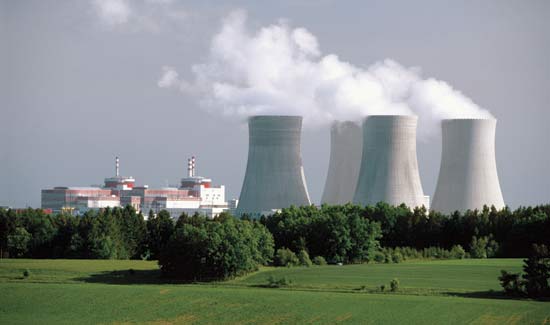
Welcome
David Burns is an environmental chemist with expertise in laboratory data audits, green chemistry, and industrial ecology. David is available to help business & professionals integrate sustainable supply chains and energy efficiency into service offerings. The following blog topics are intended to invoke awareness and/ or action in Going-Green. You are also invited to create a Free Whoisgreen business profile using the link above. David Burns is a NSC member of the Rocky Mountain Institute.

The debate between nuclear power versus energy efficiency and renewables is heating up. By definition, nuclear is not sustainable....... a topic appropriate for political debate in Australia.
Can electricity generated from nuclear power lead the the world to a fossil fuel free future? A well-informed audience attending the Rocky Mountain Institute's annual conference dring October 2009 listened to Amory Lovins and nuclear energy advocate Robert Rosner engage the auditorium with debate.
The nuclear power argument defended the two key issues facing nuclear fueled power plants - where to store the waste, and how to safeguard radioactive material from falling into the hands of unauthorised persons. Nuclear power plants were acknowledged to be in decline around the world, possibly due to the risk of an accident and the huge expense of construction. The significant build time of more than 12-15 years to plan and complete was found to be far too long for the climate solution that is required now. Many Wall street investors refer to the same issues for their choice to mark nuclear as an unattractive option at this time, thus shifting the cost burden onto the taxpayer if governments decide to build new nuclear plants now. Lovins proposed that energy efficiency and renewables would be a much better option for the United States. Lovins argued that energy efficiency deployment would be faster and cheaper, and could generate millions of jobs in clean technology spaces and would be able to provide base-load supply if time-of-use metering was priced appropriately, for example, when the sun shines.
The energy efficiency argument was made even more relevant when Lovins described how 79% of current energy derived from coal across the US is lost before it reaches the consummer. Additional losses are realised when businesses, homes, and industry rely upon over-engineered inefficient motors and pumps which themselves are connected to a plethera of inefficient plumbing and pipework, all reducing the net effective usage of the remaining energy trail. Lovins then provided the audience with statistics that suggested that 50% of products and "stuff" purchased by consumers is typically discarded within three months of purchase. Therefore, new energy solutions should first address the significant issue of energy losses and wastage before attempting to plug inefficiencies with more infrastructure.
Read the full RMI nuclear story.....
It is critical that our leaders provide the community with open and complete information so the next generation of energy supply choices match consumer demand. An emerging case in point is the development of the "smart garage" concept in California where the government is planning for 1,000,000 electric cars to move people between work and home by 2015. This plan shall connect electric vehicles to be connected to a smart grid whilst parked at home, on the street, in parking stations, and at work to a smart grid to provide power regulation and peak harmonisation, making expensive gas turbine generators redundant.
Is nuclear energy sustainable?
Nuclear power can provide endless energy, without the carbon polluting issues that burning coal possesses. However, by definition, the World Commission on Environment and Development defines sustainability as, "forms of progress that meet the needs of the present without compromising the ability of future generations to meet their needs." Most would agree that nuclear energy imposes future generations with risks surrounding the issues of mining & transportation of uranium ores, where to store spent fuel, and the possiblitiy of radioactive material being used to make nuclear weapons. Australia would also have the added consideration of how to cool a large nuclear power plant with water in a country severely affected by long draughts. Finally, community anxieties imposed on families living near nuclear power plants is most confronting.
Nuclear Pebble Bed
Reactors
You may have heard about an emerging technology from China that claims to make nuclear power generation safer, as recently featured on the ABC science show Catalyst. This new technology relies on a pebble bed reactor rather than the usual pressurised water reactor (PWR) design. The Chinese designer says although the pebble bed reactor is safer, the design continues to generate radioactive waste. Helium is used to cool the reactor instead of water, however, helium is expansive and non-renewable and requires more research before being commercially viable.
Most interestingly, the Chinese designer suggests that Australia should not build nuclear power stations at this time due to significant infrastructure & financing requirements. He suggests that Australia continue to produce the raw material and look at other energy solutions. The full interview can be read...
NATIONAL: A Newspoll survey commissioned by the Clean Energy Council (CEC) has shown overwhelming public support for the government to focus its support on renewable energy - such as solar and wind - over nuclear power. Given a choice between supporting the development of renewable energy sources and nuclear power, four out of every five people polled favoured the government giving greater priority to the development of renewables.
David Burns is a Sustainability Advisor and Analyst, www.sustain450.com.au
If you have friends that would like to read this, then









